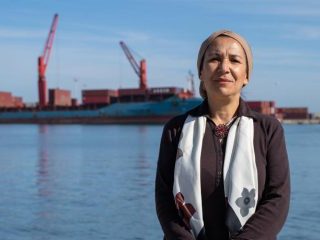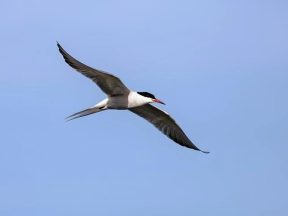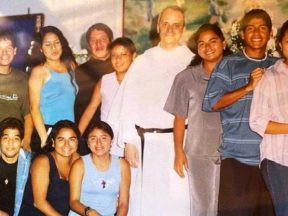Getting out. The purification of the mother.
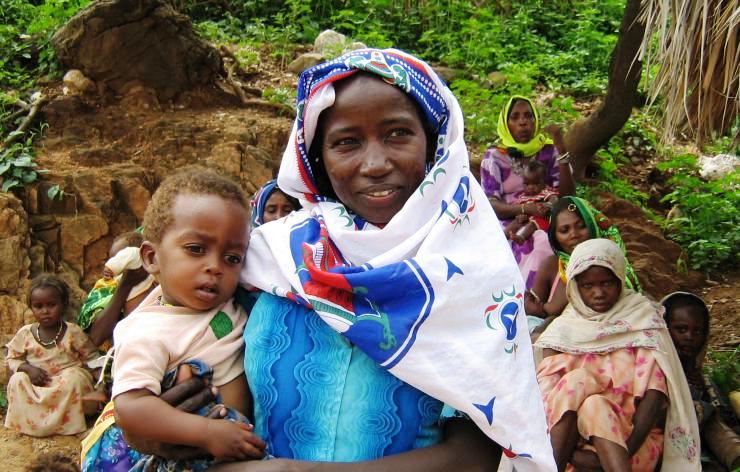
The life of the Kunama, from birth to old age – and even after death, is a tapestry of traditional rites and ceremonies handed down from the ancient fathers (ande) and scrupulously observed.
The first of these rites is the celebration of the Isata Olà, (Gettng out), the purification of the mother after childbirth (dagosa) and the washing of the newborn (deda niarca).
This rite inserts the newborn into the Kunama tribe; it is like an enrolment recognising the child as a citizen among its people.
Children that don’t undergo the rite, once adults, however long they live among the people, will always be excluded from tribal life and considered foreigners. They lose their rights and are not allowed to perform the other rites during their life: celebrate a ritual marriage or be buried in the common cemetery.
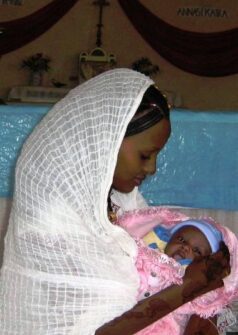
The Isata Olà, (Gettng out), is the purification of the mother after childbirth (dagosa).
The Isata Olà rite is the gateway to Kunama life, even if it means the “way out.” The newborn came out of its mother’s womb and now, through this rite, it will get out of its nest to where family life continues.It’s not important whether the mother is legally married or not, or whether the child is male or female; it is a living being coming from the family – the cell where the tribe grows and multiplies. Not performing the rite creates the fear that the spirits, or, more precisely, the souls of the ancestors, may exact revenge on the newborn, suffocating it, making it blind, or causing some other horrible misfortune. One has to follow traditions.When the time comes for a woman to give birth, she can only leave her house after carrying out the prescribed rite. For personal needs she can leave the house by a small door, avoiding looking at or meeting other people. When she leaves the house, she has to use the arkubà (camel) stick made of asabà or aitarà (types of tree), tied together with doum palm leaves (laca).
For some days she will not be given stodgy food but thin aifa, flour that is diluted and cooked. After birth, the umbilical cord still attached to the baby will be anointed with a paste made of oil, butter, and ashes. When it falls off, the mother will have a ritual bracelet of doum palma leaves (laca furda) tied to her wrist.
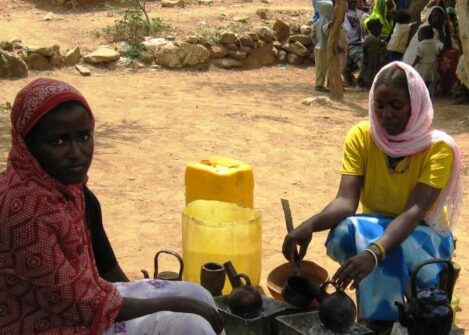
For some days she will not be given stodgy food but thin aifa, flour that is diluted and cooked.
On the following second or fourth day, the mother removes the bracelet and carries out the other ritual ceremonies. That piece of umbilical cord won’t be thrown away, just like the lock of hair which will be kept in a small container. At the time prescribed for the Isata Olà rite, apart from the mother, father, maternal aunt, also relatives and friends participate. It is usually the newborn’s mother who carries out the rituals. First, leaving the house. The mother who has given birth, together with the baby and the celebrant, her head covered with a white veil, comes to the house’s entrance. Outside, some people sprinkle the women and children with water as a sign of purification. The maternal aunt fetched this water in the morning from the river or the village well before anyone else. They eventually come out of the house: the mother sits down on a mat on the ground and the relatives sit in a circle on stools to witness the completion of the ritual.

The maternal aunt fetched the water in the morning from the river or the village well before anyone else.
At this point, the celebrant unties the mother’s tresses and hangs a string of small shells around her head. She then immerses some necklaces in the ritual water and with these touches the mother’s forehead and breast. She immerses them in the water again and then touches her shoulders and back. This is repeated three or four times.
She carries out a similar rite with the child and dips its head and then its bottom into the ritual water. The necklaces are then placed around the necks of the mother and the newborn child and the celebrant marks their foreheads, eyelashes, and eyebrows with black powder.
Choosing the name is an important part of the ritual. The name is, in general, associated with events or periods of the year during which the child was born. One born in the rainy season will be called Galla, meaning rain. The word sena (grass) is given to those who are born when the field is being cleared of grass.
Those born during the harvesting of dura (Kina) are called Kini. Unfortunately, war and the difficulties it causes are also remembered in names: Masi (male) from masa (wages war) is the name of one born when the country or area are devastated by war, and Agiagi (female) from agia (flight) or matuda (one who flees), if the birth takes places during flight or when people are obliged to move.
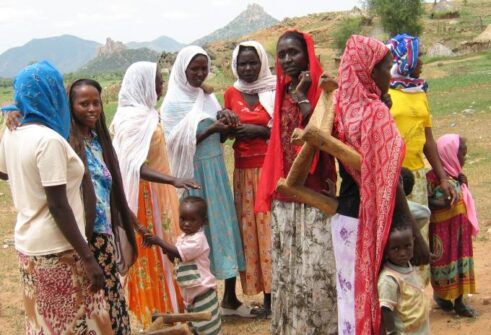
Choosing the name is an important part of the ritual.
When the participants have conferred the name on the baby, the mother offers everyone aifa (Kunama beer). The celebrant, with the baby in her arms, uses a conical filter lacagià, to pour the beer to be used for the rite’s concluding toast onto the mother’s head.
Two or four days later, the mother’s hair is newly arranged as she prepares for the second part of the Isata Olà. The ceremony is called Bia co-ghira (fetching water) because, when the rite is over, the mother is declared free to leave the house and go to the river to fetch water. The woman puts the wooden carrier on her shoulders with the balancing ropes (assuma) to which the two containers are attached: one has water, the other some lit coals on terracotta fragments.
When she is a certain distance from the house, the celebrant crushes the coals and prepares a paste with which she traces a cross on the mother’s breast, back, hands, and feet. The mother then washes her hands and feet in the water remaining in the container.
This concludes Isata Olà. The mother is now free to leave the house and take up her daily tasks. When the child grows up, he or she will undergo other traditional rites. (A.F.M.)

